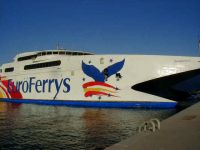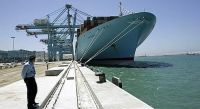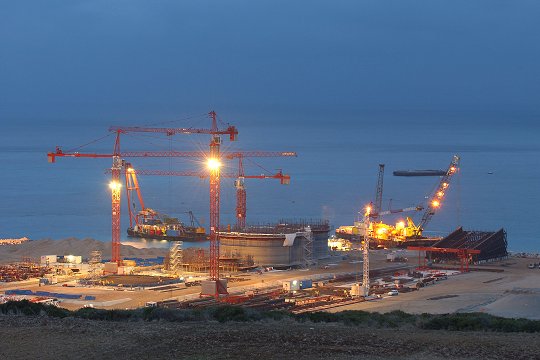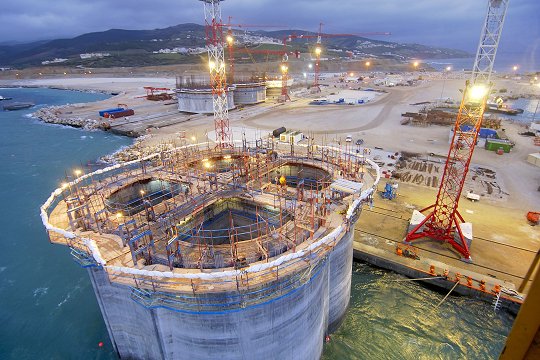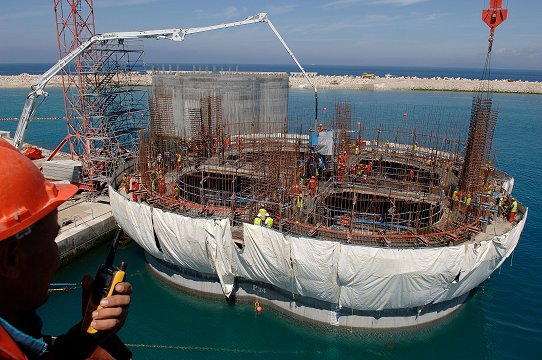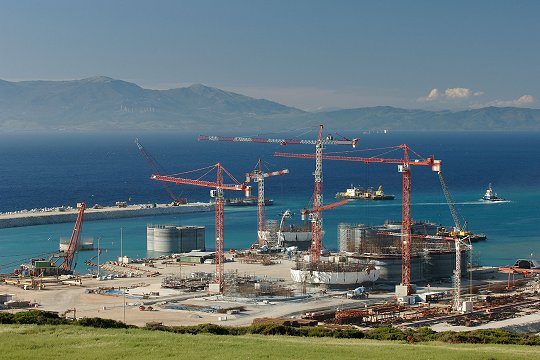FROM our luncheon spot, high on a ridge jutting out of the classic white town of Vejer de la Frontera lies a view, unlike almost any other in southern Spain.For spreading out in front of us is an entirely interrupted ten-mile vista of rolling fields all the way down to the white sandy beaches of El Palmar and Canos de Meca.
An incredible sight, this patchwork quilt of greenery and long, unspoilt beaches in the distance is part of the Cadiz coastline, known as the Costa de la Luz, or The Coast of Light.
This is what the majority of Andalucia’s coastline would have looked like 50 years ago so it is heartbreaking to discover that there are concrete plans to do the same again here. More of which later.
This is Europe’s true deep south; a windswept flood plain, fringed by long dune beaches and crowned by a series of austere ‘cubist’ towns, which were built by the Moors who ruled this land for nearly 800 years.
Indeed, their bridgehead was at Tarifa, easily one of Spain’s most atmospheric towns.
If you have never taken a ride to these shores, just the other side of the Rock of Gibraltar you are in for a surprise.
From Tarifa in the south to Chiclana in the north there are literally miles and miles of mesmerizing and largely unspoilt white, soft and sandy beaches.
But it is not just ideal for a bucket-and-spade-break away from the over-built, high-rise monstrosities the other side of the Rock.
There are numerous sites to see, from the famous Trafalgar lighthouse – off which the crucial naval battle once took place – to the historic fishing village of Sancti Petri and from the Roman ruins at Bolonia to the twisting, white-washed streets of Conil.
And then there are the hidden gems, like exclusive Roche, where Madrid’s captains of industry take their holidays, and Zahara de los Atunes, the sleepy fishing village, which is fast garnering a reputation for its food.
And the, of course, are the two main gems of the coastline, the historic fortress town of Tarifa – a Mecca for windsurfers from around the world – and hip, alluring Vejer, where cabinet ministers and celebrities rub shoulders.
The coastline is only matched in beauty by Cabo de Gata in Almeria and there is something incredibly haunting about the stunning windswept beaches, particularly around El Palmar.
And still there is more, with El Palmar claiming to have the best surfing waves in Andalucia and Bolonia, with Europe’s largest sand dune, at over 30-metres in height.
And don’t forget Caños de Meca – the fun capital of the region – or gritty Barbate, whose fish restaurant El Campero is among the best in Spain.
English lawyer Carmen Atkins, who moved to the area from Sevilla with her family nearly two decades ago, insists she could never go back.
“You drive down to the coast to see this incredible expanse which is like nowhere else around.
“It is the great mix of coast and hills and these lovely towns that hold a lot of the old Spain in them.
“Now we live here I could never go back.
My wife and I are also long-time fans of the area and always favour the longer two hour drive down to the Costa de la Luz from our home in Ronda, over a short 45-minute trip to the Costa del Sol.
The coastline is only matched in beauty by Cabo de Gata in Almeria and there is something incredibly haunting about the stunning windswept beaches, particularly around El Palmar.
While not exactly aficionados of its famous watersports, our children love the beaches and we love the vibe of the area, its laid back, unshowy style, its friendly, unfussy locals and, above all, the incredible colour and scenery.
The Costa de la Luz is, without a doubt, for the more discerning tourist, and, in particular, the hotels in and around Vejer are some of the most sophisticated in Spain.
Carmen adds: “We also love the stylish mix of shops and restaurants in Tarifa, its a melting pot of worldly Spaniards and colourful expatriates, that bring it so much diversity.”
It is here that a disproportionate number of fashion labels have been born in Spain, from the now sadly defunct Indian to the still thriving Mala Mujer and trendy French boutique Babachic, which now has five shops in Spain.
“The good news is that young people seem to be against the project”
There is a distinct Tarifa scene, not dissimilar to the one you find in Ibiza and it is one of the few places – thanks in the main to its breezes – that does not completely shut down through the winter.
Maria Malo, who has been running her fashion empire Mala Mujer out of the town for nearly a decade, explains: “There is something incredibly creative about the town and coastline. The scenery is so special and is very inspiring.”
But alas, all is not well on the Costa de la Luz.
Just as is the danger in the Cabo de Gata natural park in Almeria, the economic pressures on cashing in from tourism are making inroads here.
It has already happened in the sprawling, ugly development of nearby Novo Sancti Petri, whose endless roundabouts, golf courses and luxury condos give a flavour of the nearby Costa del Sol.
But there are all sorts of other daft plans on the horizon, including a crazy idea to build a huge apart-hotel development on virgin land, right by the beach alongside the stunning Trafalgar lighthouse.
While not yet confirmed, there have been whispers of a nine-holf golf course and, before you know it, of course, there will be the obligatory villas, then commercial centres, etc, etc. (see story on page 32)
“It would be crazy to allow all this to happen,” says Maria Malo. “This is one of the very last unspoilt coastlines left in Spain.”
Lawyer Carmen agrees. “The politicians here just don’t have any foresight. All they think about is jobs, but they haven’t figured out yet the quality of tourism that comes here can continue to grow.
“The good news is that young people at least seem to be against the projects so we will have to hope they can make themselves heard.”
Equally alarming, is a mad scheme to increase the size of the Tarifa harbour by up to ten times.
According to critics of the project – that would cause a massive increase in the number of ferries – it would “turn the town into Algeciras, “one of Spain’s most polluted”.
“The new port will completely ruin Tarifa if it is allowed to go ahead,” says Swiss Beat Steffan, whose company Dwarf 8, is carving out a niche as Andalucia’s hippest new drink.
“It is all to do with allowing Algeciras to grow as a container port to compete with the fast-expanding Tanger Med port in northern Morocco.
“But why should Tarifa – and for that matter other parts of the coast – be ruined in order to aid financial gain elsewhere?”
It is a question that all nature lovers should be asking themselves around Andalucia today.
Either way, make sure to come down and see the still stunning Costa de la Luz before the politicians and planners get their wicked way.

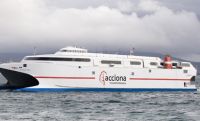
 IAM provides Internet connection across the country via its subsidiary company Menara, a principal Internet service provider in Morocco. The service started as a test in 2002 before it was launched in 2003. The company offers the following options:
IAM provides Internet connection across the country via its subsidiary company Menara, a principal Internet service provider in Morocco. The service started as a test in 2002 before it was launched in 2003. The company offers the following options: • Méditel 3G+ 1.8 Mbit/s (around €20)
• Méditel 3G+ 1.8 Mbit/s (around €20) The third largest telecommunication company in Morocco is Wana. It appeared to be one of the early Internet service providers in Morocco. It started marketing its internet services representing the brand Wanadoo, that later was converted to Wana. Initially a subsidiary of France Telecom, the company is now controlled by the Moroccan conglomerate ONA, with Zain of Kuwait holding about 30% of equity.
The third largest telecommunication company in Morocco is Wana. It appeared to be one of the early Internet service providers in Morocco. It started marketing its internet services representing the brand Wanadoo, that later was converted to Wana. Initially a subsidiary of France Telecom, the company is now controlled by the Moroccan conglomerate ONA, with Zain of Kuwait holding about 30% of equity. access and engineering services, and development consulting.
access and engineering services, and development consulting.  Internet country code top-level domain (ccTLD) for Morocco is .ma, administered by Maroc Telecom. A local registrar with a local Moroccan company as administrative contact is needed to register an .ma or .co.ma domain name. Further restrictions are imposed on the registering of other second-level domains.
Internet country code top-level domain (ccTLD) for Morocco is .ma, administered by Maroc Telecom. A local registrar with a local Moroccan company as administrative contact is needed to register an .ma or .co.ma domain name. Further restrictions are imposed on the registering of other second-level domains. • ma - general use
• ma - general use Being an emerging market at the crossroads of Europe, Africa, and the Middle East, with imports making up $11 billion in products each year, Morocco also succeeded in developing of different types of e-commerce and
Being an emerging market at the crossroads of Europe, Africa, and the Middle East, with imports making up $11 billion in products each year, Morocco also succeeded in developing of different types of e-commerce and  As for the purchasing online, it’s known that over 3 million Moroccans who hold a bank card are now able to use them for buying via the web, mostly owing to technical initiative by the Centre Monétique Interbancaire (CMI).
As for the purchasing online, it’s known that over 3 million Moroccans who hold a bank card are now able to use them for buying via the web, mostly owing to technical initiative by the Centre Monétique Interbancaire (CMI).
 The other companies in the country have joined the new system, such as technology vendor "Microchoix.ma" and online shoe shop "Auderby.ma".
The other companies in the country have joined the new system, such as technology vendor "Microchoix.ma" and online shoe shop "Auderby.ma". The year 2009 showed a strong growth in e-commerce sector. The first half of 2009 was also marked by the launch of three major online improvements for Moroccan consumers. The first is an online payment website, run by Maroc Telecom, enabling customers to pay their landline, mobile, and internet bills. The second is a similar site run by Moroccan water supply company Lydec, allowing users to pay their water and electricity charges online. Finally, in the public sector, the Kingdom's General Treasury (TGR) offered citizens the option to pay their taxes online.
The year 2009 showed a strong growth in e-commerce sector. The first half of 2009 was also marked by the launch of three major online improvements for Moroccan consumers. The first is an online payment website, run by Maroc Telecom, enabling customers to pay their landline, mobile, and internet bills. The second is a similar site run by Moroccan water supply company Lydec, allowing users to pay their water and electricity charges online. Finally, in the public sector, the Kingdom's General Treasury (TGR) offered citizens the option to pay their taxes online.
